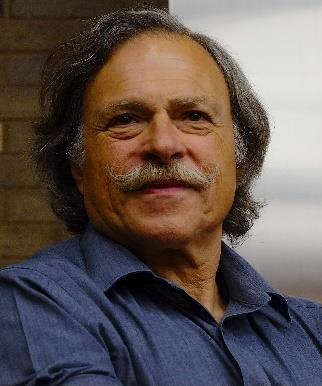event
STAMI-SMI Distinguished Lecture Series: Professor Paul Chaikin
Primary tabs
Abstract
Melting in two dimensions is characterized by the thermal excitation and proliferation of free topological defects, disclinations and dislocations which destroy the rigidity of the crystal. This freezing/melting process has been well established for flat systems especially for dipolar, U(r) ~1/r3 potentials, with control parameter, Γ = U(a)/kBT, where a is an interparticle spacing. The flat spacing freezing occurs at Γ ~ 70. On a sphere topology requires that there must be a net 12 pentagons (1/2 disclinations) i.e. the 12 pentagons on a soccer ball, and energetically it is favorable to screen the pentagons with strings of dislocations (pentagon-heptagon pairs) known as “scars”. Our system consists of charged colloidal particles in an oil droplet in water bound to the inner surface by image charges. We study particle mean square displacement, hexagonal order, defect structure, and scar-scar correlations by confocal microscopy for droplets of different Γ and number of particles. Freezing on sphere proceeds by the formation of a single, encompassing, crystalline “continent” that forces the defects into 12 isolated “seas” with icosahedral symmetry at the flat space value of Γ ~ 70.
A reception for Professor Chaikin will begin at 2:15 p.m. in the Molecular Science and Engineering Building, Atrium - First Floor. We look forward to seeing you there.
Biography
Paul Chaikin is Julius Silver Professor of Physics at NYU and Henry DeWolf Smyth Professor of Physics, Emeritus, Princeton. He graduated from Stuyvesant HS, Caltech, Univ. of Penna, is a member of the National Academy of Science, fellow of the American Academy of Arts and Sciences, American Physical Society and Institute of Physics (London), has held professorships at UCLA, Univ. of Penna., Princeton, and NYU and visiting Professorships at Univ. Paris-Sud, Orsay and Institute Curie. He has worked on problems in hard and soft condensed matter physics, observed triplet superconductivity in organic conductors, showed the thermopower of correlated electronic systems has a (k/e)ln2 contribution, started the field of diblock copolymer nanolithography, showed that M&M’s® pack more efficiently than spheres, that DNA origami’s can replicate and exponentially grow, that driven irreversible systems can self-organize by condensing into a reversible absorbing state and that quasicrystals and hyperuniform disordered structures have a photonic bandgap.
Status
- Workflow status: Published
- Created by: Tim Parker
- Created: 12/14/2016
- Modified By: Tim Parker
- Modified: 06/23/2017
Categories
Target Audience

